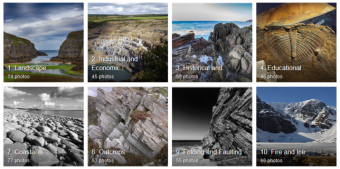The year is 2015. The world of paleoseismology is occupied by scientists traveling to Nagoya. Well, not entirely… One small number of unflinching scientists stay at their desks and hold out against the invaders. Today is Friday, and here are your links!
Delicious Cartography – Maps Made Of Food
“Food is a very important part of national and regional identity. ‘Tell me what you eat and i will tell you where you come from.’” See great map art made out of food by Caitlin Levin and Henry Hargreaves at Geoawesomeness.
The Silk Road helped form a hidden carbon sink under the desert
“Scientists have found a potentially large carbon sink in the most unlikely place on Earth – under the desert. The increase in carbon storage is linked with the rise of farming in arid landscapes.”, by Ekbal Hussein on The Pale Blue Dot. It deals with the recent open access paper by Yan Li et al.: Hidden carbon sink beneath desert.
Open Access paper of the week
This weeks GSL open access paper features debris flow mechanics:
The 100 Great Geosites Photo Competition
Do you know the GSL geosites? Have you visited any of them? Well, here is your chance to make your photographs famous by submitting them to the competition: “The 2016 #100geosites calendar will feature 12 of our sites, with some background information about them and how to visit. It will also contain a map of the full list, as well as useful geological dates for your diary.To create it, we need your help… send us an image of any of our 100 geosites. Winning photographs will be featured in the calendar, with full credit. ”
A Pakistan glacier, as viewed from a drone
More stunning images: “David Kaszlikowski took a series of stunning photographs of a glacier in the Karakoram region of Pakistan while on a film expedition.”, on theguardian. (HT @EuroGeosciences)
And here are some more of my favourite tweets:
Have a nice weekend!







No Comments
No comments yet.